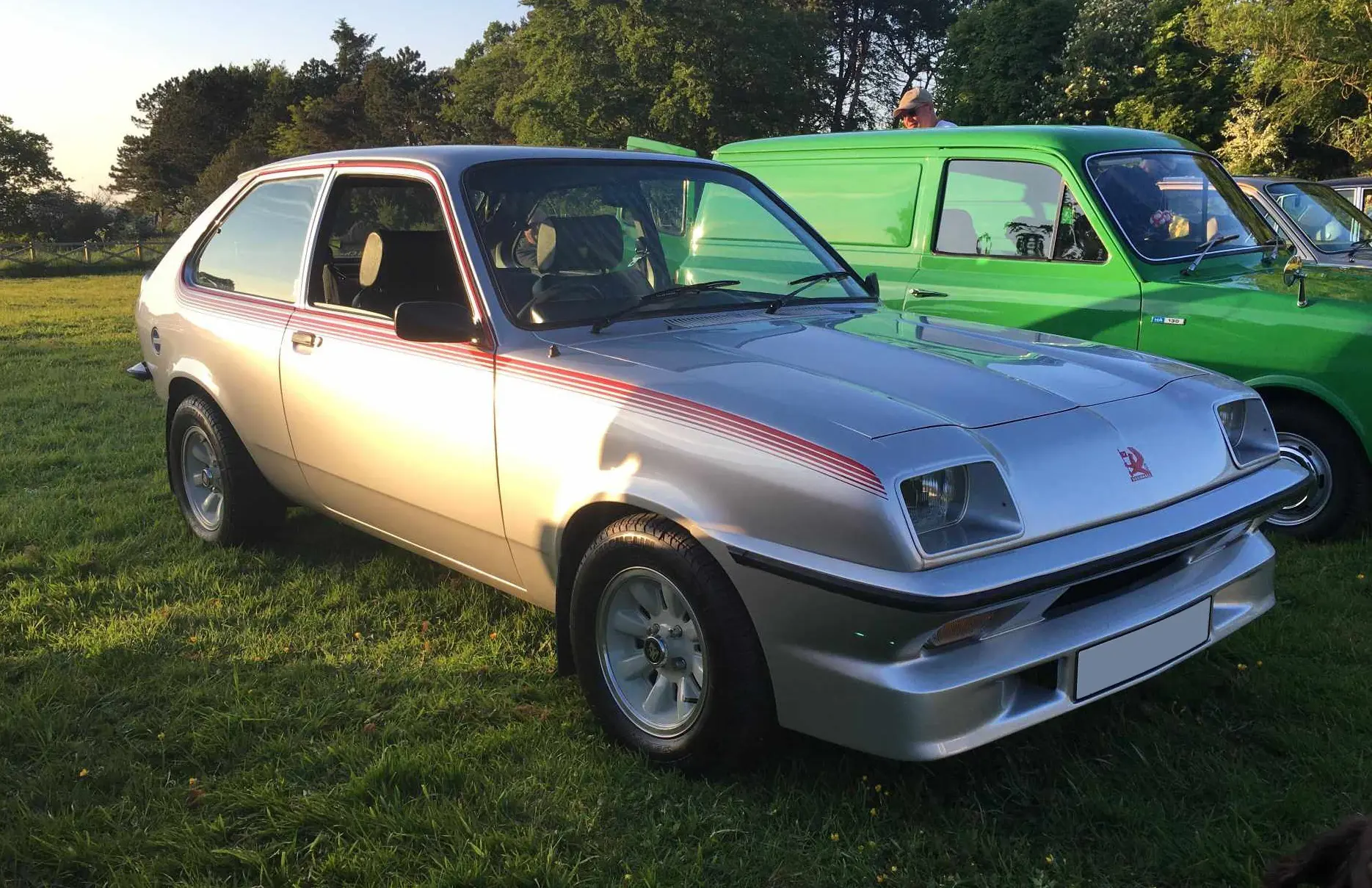Meet The Owner – Steven Gray and his Vauxhall Chevette 2300HS
24 May 2024
Steven Gray recently fell prey to a phenomenon known to many classic car owners. There he was, minding his own business and thinking his current fleet of Bedford HAs and Vauxhall Chevettes was quite enough, when suddenly he was caught in the tractor beam of a tempting vehicle. Naturally, Steven fought with true valour, but the lure of that metallic silver paintwork was too strong. And so, he found himself the owner of a 1978 Chevette 2300HS.

Back in 1975, the year of the Chevette’s launch, the Vauxhall chair Bob Price decided rally victories were key to raising the marque’s profile. Ford winning the 1975 RAC was a further inspiration. Luton’s management decided the Chevette, rather than the Magnum would be the cornerstone to this programme, and developed the HS in collaboration with Blydenstein Racing.
At that time, General Motors did not back race programmes, but this was cleverly circumvented by creating DTV - “Dealer Team Vauxhall”. Following Group 4 rallying regulations, the company needed to construct 398 replicas of the original two 1976 rally cars. Motor Sport wrote: “If Vauxhall keep the attractive combination of docile power, good ride and fine handling, and then ensure the reliability of the whole plot, the Chevette HS 2300 will have proved worth waiting for”.
In fact, creating road versions took 18 months, due to problems with developing the engine and supplies of the cylinder heads. Sales finally began in early 1978, making Steven’s Chevette one of the first examples. The HS cost £5,199, making it more expensive than the Triumph Dolomite Sprint at £4,898. It also cost nearly £1,000 more than an RS2000 Mk. II, but its 117mph top speed meant that it was 7mph faster than the Escort.
Your friendly local Vauxhall dealer could extoll the virtues of its five-speed Getrag transmission, 2.3 litre “Slant Four” engine a 16-valve cylinder head, and the front air dam. In addition, the rear axle and suspension were from the Opel Kadett C GT/E. The proud HS owner could further boast of achieving 0-60 in eight seconds on the M27, the 135 bhp power output, the alloy wheels and that metallic Silver Starfire paint finish.
Other HS features included extra instruments. Plus, according to Vauxhall’s sales copy, “a push-button radio, front head restraints, tinted glass, tartan cloth, trim, full carpeting throughout and reclining front seats shaped to provide lateral support.” Autocar found it: “a taut, responsive little machine that begs to be driven hard” and “as a homologation special, it is a surprisingly good road car.”
However, Autocar believed the HS would only appeal to “those who like a car with obvious sporting associations or those who simply want enthusiastic motoring”. This was probably true, but the 2300HS lent much lustre to the entire range. In 1980. L. J. K. Setright compared the Chevette with the VW Golf GTi, the Talbot Sunbeam Lotus, the Renault 5 Gordini, the Peugeot 10ZS and the Fiat 127 Sport for Car. He opted for the Vauxhall, saying, “the really outstanding thing about the Chevette 2300 HS is that it alone feels capable of a lot more.”
When HS production ended in 1981, it had achieved 14 international rally victories plus the British Open Championship. It also had the more dubious accolade of various Chevette E owners fitting aftermarket front spoilers and decals in the vain hope of becoming a 2300HS by proxy. This subterfuge worked only after dark during a thick October fog, and even then, only until the moment when they fired the engine.
As a Vauxhall and Bedford enthusiast, Steven is looking forward to many years of HS motoring. And he does not regret succumbing to the lure of that tartan upholstery.
With thanks to: Steven Gray.
